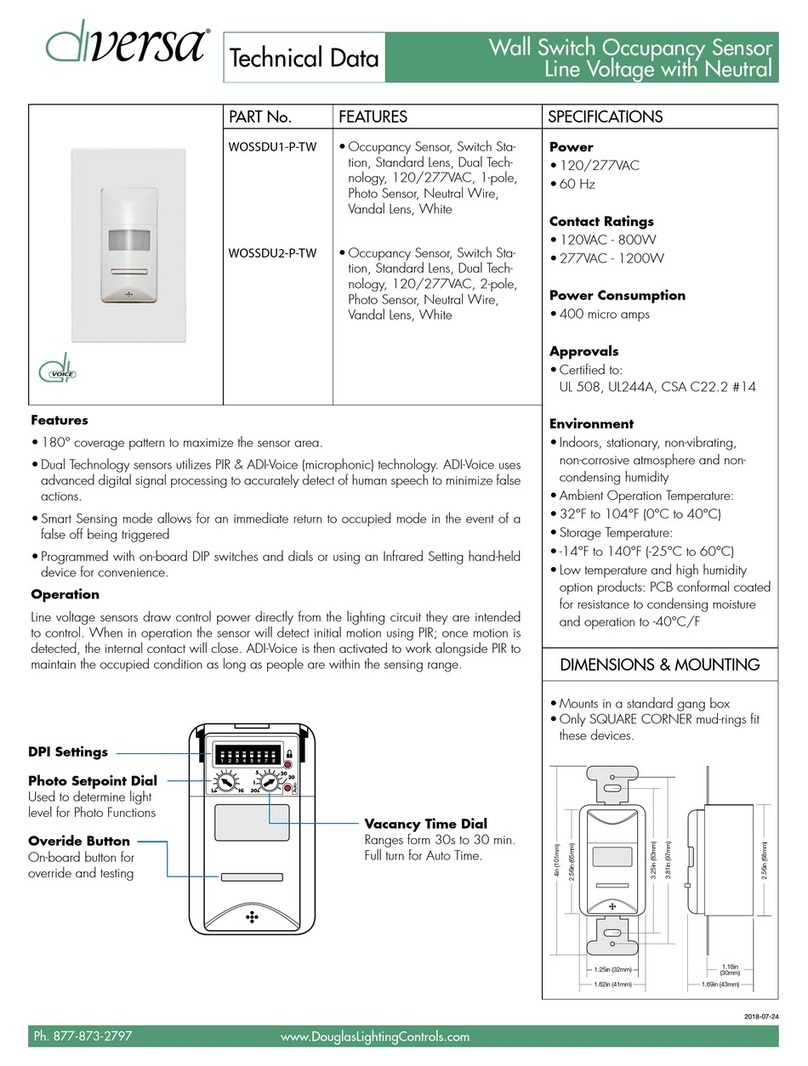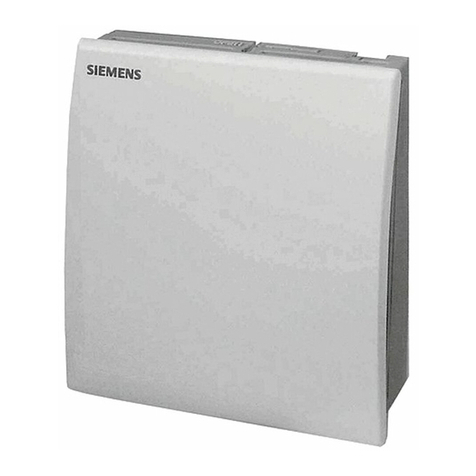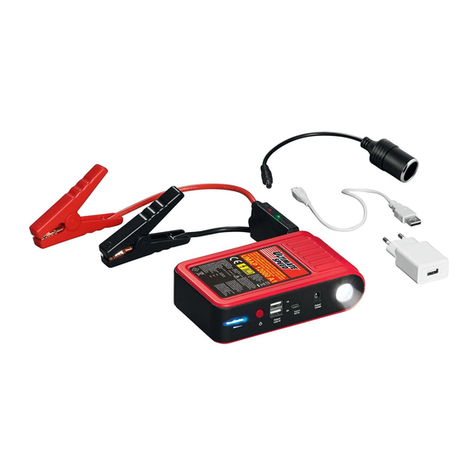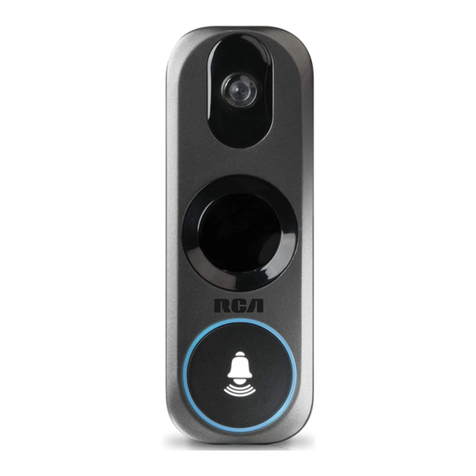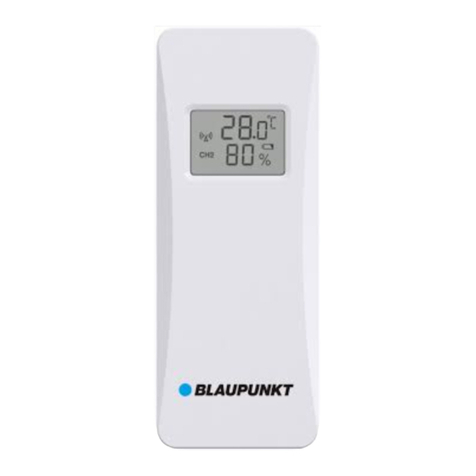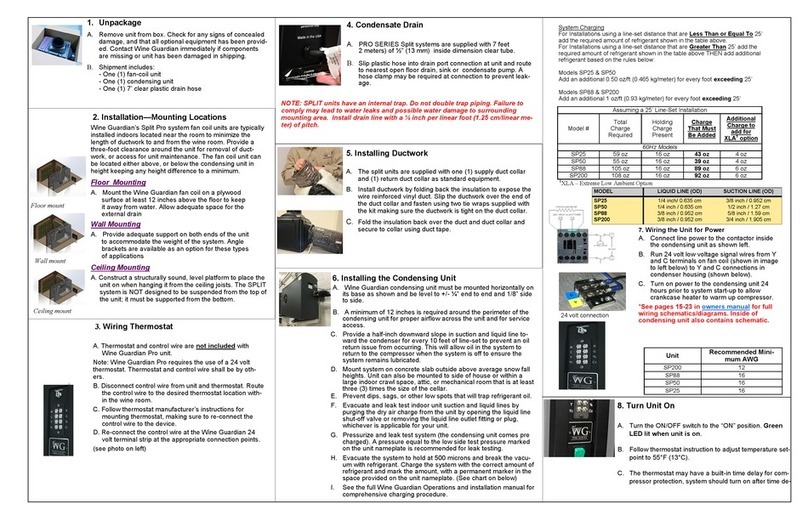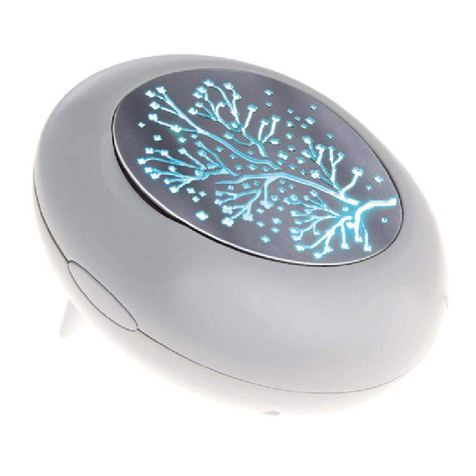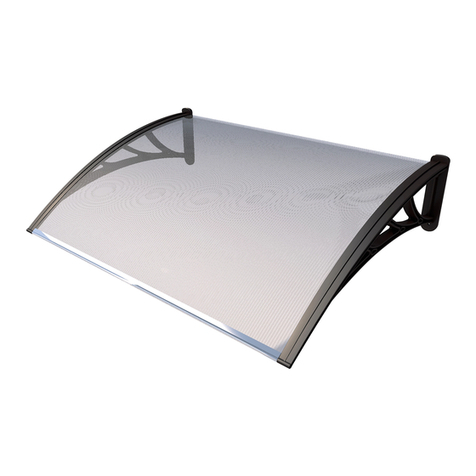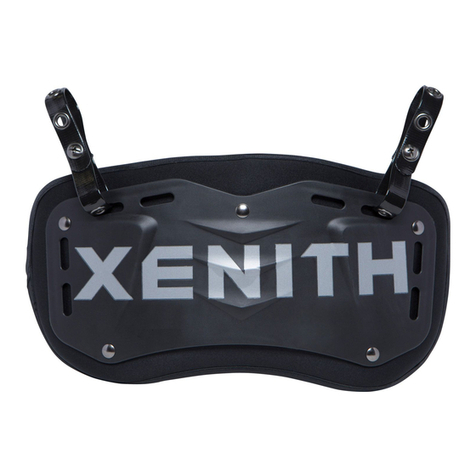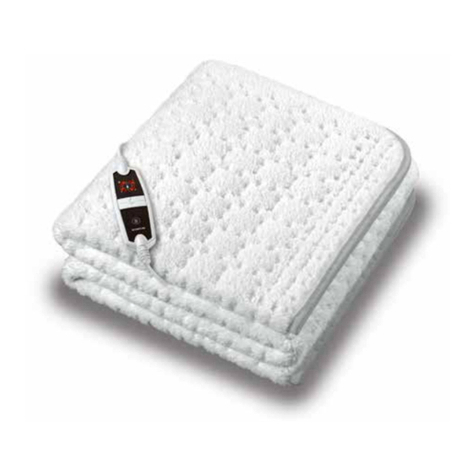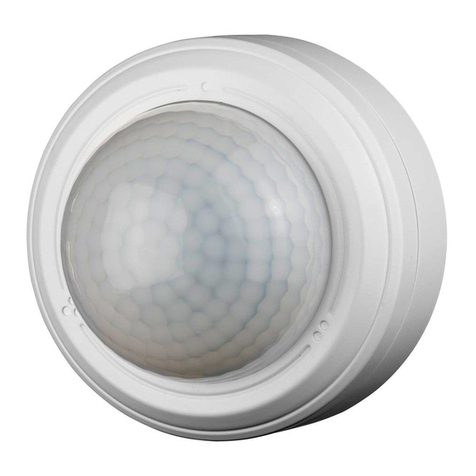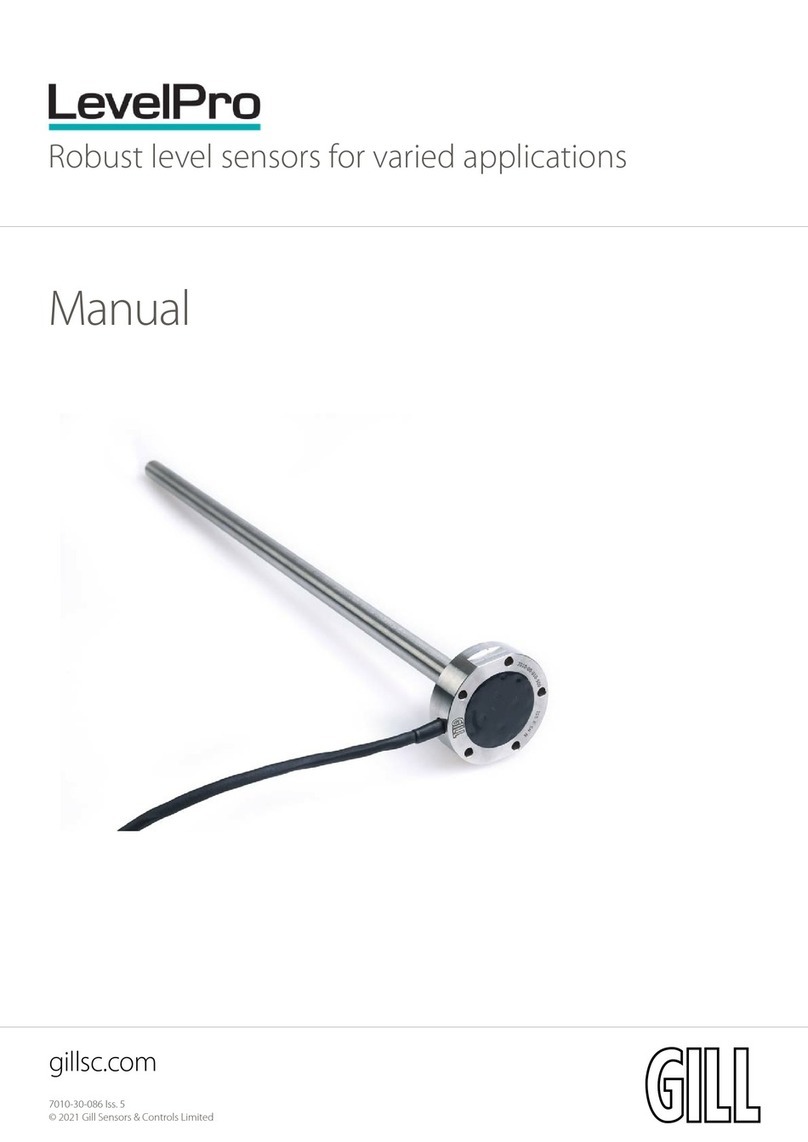Diversa WORSI32-P-N User manual

PART NO. FEATURES
WORSI32-P-N
standard lens, PIR,
347Vac, 2-pole,
photo sensor
WORXI32-P-N
extended range lens,
PIR, 347Vac, 2-pole,
photo sensor
• Commercial grade components for long term reliability
• Straightforward wiring for quick installation
• Factory congured for the most common applications
• DIP switches and dials for advanced functionality
• Photo Sensor for Natural Daylight control
Wiring Instructions
Diversa 347Vac sensors include #14AWG wiring leads. Use appropriate sized wire nuts for connecting wires.
CAUTION: Turn power off at the circuit breaker before working on sensor. According to NEC 240-83(d), if the branch
circuit breaker is used as the main switch for a uorescent lighting circuit, the circuit breaker should be marked SWD.
All installations should be in compliance with National Electric Code (NEC) and all state, provincial, federal, and local
codes.
DIMENSIONS/MOUNTING
inches (mm)
SPECIFICATIONS
•
3 0 ° Tilt
4.17”
(106)
0.88”
(2 2 )
DIPs and Dials
under cover
plate
Wire Mounting
ring
Ceiling tile
2.0”
(52)
Power
• 347Vac
• 60Hz
Contact Ratings
• 347Vac - 800W
Power Consumption
• 5.7mA
Approvals
• Certied to UL 508, UL244A, CSA C22.2 #14
Unit attaches to mounting ring with
screws or it can be mounted into an
octogan box.
Environment
• Indoors, stationary, non-vibrating, non-corrosive atmosphere an
• Ambient Operating Temperature: 32°F to 104°F (0°C to 40°C)
• Storage Temperature: -14°F to 140°F (-25°C to 60°C)
Octagon Box
Conduit
•The WOR sensor will t an octagon
box. It is veryimportant that conduits
be attached at opposite ends ofthe
box.
•Use a 2 1/8 ” or more, deep box.
Ifthe box is less, use the spacer ring.
White
Black
Neutral
Black/White
SwitchLoad
Line Blue
Neutral
Blue/White Load
Switch
Line
2-pole
No Neutral
Installation
Installing in Smaller Room (Standard Lens)
• Locate the sensor near the entrance door wall to prevent it from viewing out into the hallway.
• Positioning the sensor in this manner ensures that an occupant moves across the longest detection beam
Typical Enclosed Oce
Side View
14 ft
7 ft
0ft
7 ft
14 ft
9 ft
0ft
14 ’ 12 ’ 10 ’6’ 3’ 0’ 3’ 10 ’6’12 ’ 14 ’
Top View
• Optimal usage is to detect small motions such as hand movements
• Designed for a mounting height of 7-15 ft
Extended Lens for Larger Rooms
• Place the sensor near the center of the room ceiling. Locate it so the approximate distance of 27ft in
• Tilt the lens to aim the detection zone to the bottom of the door.
• Positioning the sensor in this manner ensures that the beam does not reach outside the room without
• Optimal usage is to detect large motions such as walking.
• Designed for a mounting height of 7-15ft.
Operation
Diversa 347Vac sensors draw control power directly from the lighting circuit they are intended to control. When in
operation the sensor will detect initial motion using Passive Infrared (PIR); once motion is detected, the internal
contact will close. Motion through PIR is used to maintain the occupied condition as long as occupants remain
within coverage range of Sensor.
ON= Test Mode
DIP Switches
Time Delay Dial
Ranges from 30s to 30 min.
Full turn Clockwise for Auto Time
Full turn Counterclockwise for Test Mode
Photo Level Dial
Used to determine light
level for Photo Functions
Manual Override Button Sensor Location Guidelines
To optimize the performance of Diversa Sensors, please review the coverage pattern, range, and model to
match with the application. Room dynamics will change when people and furniture are occupying the space.
In some rooms, after move in, some sensors may require adjustments.
• Ensure that the sensor is at least 30 inches away from air handlers/registers and not pointed directly at
windows
• Check that you are installing the right product (check the product model number) as per the drawings
Sensor Location Guidelines for“P” models
• Place outside the direct cone of light from xtures
• Between 3 to 12 feet from windows
• As close as possible to the xture being controlled
• Above the least illuminated space in the work area
• Away from lighting that is not being controlled by the sensor
upon entrance, utilizing the sensor's maximum PIR range.
Typical Classroom
27ft
27ft
C
Side View
27 ft
14 ft
0 ft
14 ft
27 ft
9 ft
0ft27 ’ 16 ’ 9’ 3’ 0’3’ 9’ 16 ’27 ’
Top View
or in dead center of room.
non-condensing humidity
Auto Time LED
Test Mode LED
(Shown with cover
plate removed)
reducing sensitivity.
Line Voltage Passive Infrared (PIR) Occupancy / Vacancy Sensor
Installation Guide
Diversa Occupancy & Vacancy Sensors - Recessed Ceiling, Passive Infrared (PIR), 347Vac
www.douglaslightingcontrols.com
Diversa by Douglas Lighting Controls
14040700-C

Troubleshooting
Before calling Technical Support, please review the following Troubleshooting Guide.
Factory DIP & Dial Settings
UP
DOWN
12345678
General Programming Instructions
This covers mode programming using the onboard DIP and Dial switches.
***NOTE***
•Start with the PIR Sensitivityat Medium (DIP 5 DOWN)
•To set the light level at which youwant to prevent the sensor from turning light ON, rotate Light Level
Dial to adjust the light level
•To enable RestroomMode , ensure that DIP 8is UP. In this mode Pole 2 will remainon 50%
longer than Pole 1(time is set with the Time Dial)and Pole 2 cannot be Photo Inhibited
Factory Defaults
All DIP switches in DOWN position. Time delay: 10 minutes; Natural Daylight level: 50% (200 lux).
Diversa Occupancy Sensors with a “P” in the model number contain a Photo Sensor that is
controlled by DIP 6. The factory default for Natural Daylight Mode = ENABLED (DIP 6 DOWN).
This mode disables the Manual Override Button. To test sensor functionality, you may need
to disable Natural Daylight Mode (DIP 6 UP) to test sensor functionality.
DIP Switches & Dial Settings
Some DIP Switches Control Optional Features Not Found on All Products
DIP # Function UP DOWN Default
1PIR LED Disabled Enabled DOWN
DOWN
DOWN
DOWN
DOWN
DOWN
DOWN
DOWN
2Walk-Through
Mode Enabled Disabled
3Manual Override Disabled Enabled
4Sensor Mode Manual ON (Vacancy) Auto ON (Occupancy)
5PIR Sensitivity High Medium
6Natural Daylight
Mode (”P” Models) Disabled Enabled
7Not used Inactive Inactive
8RestroomMode
(2-pole models) Synchronized
Offset
TEST
Time Delay Dial
(=LEDON)
1
5
10
20
30
Auto Time
Hi
Lo
Light Level Dial
Photo Sensor “P” models only
DIP Switch Modes
DIP 1 - PIR Detection LED
LED in Sensor’s PIR window ashes GREEN when PIR detects motion. LEDs can be turned OFF with DIP switch. Sensor
continues to function.
DIP 2 - Walk-Through Mode
When Enabled and Occupancy switches lights to ON and sensor does not detect motion after 30 seconds of light ON,
an OFF Time Delay of 3 minutes is used (OFF Time Delay must be greater than 3 minutes). If motion is detected after
30 seconds of lights ON, the congured OFF Time Delay is followed.
DIP 3 - Manual Override
Manual Override Button can be disabled with DIP switch to prevent manual ON/OFF.
DIP 4 - Sensor Mode
Vacancy Mode - Lights must be turned ON manually when entering a room and are automatically turned OFF when
occupancy no longer detected. Maximizes energy savings because lights are only turned on when lighting is
required.
Occupancy Mode - Automatically turns lights ON when occupancy is detected in a room and automatically turns
lights OFF when occupancy is no longer detected. This is a very convenient mode as lighting controls never have to
be touched. Because lights are always turned on when Occupancy is detected regardless of the need for lighting,
this is less energy efficient than Vacancy Mode.
DIP 5 - PIR Sensitivity
Can be moved from Medium sensitivity (default) to High sensitivity if sensor is not recognizing Occupancy.
DIP 6 - Natural Daylight Mode (”P” models)
When ENABLED, lights ON when Occupancy detected AND daylight level is below Light Level Dial setting. With lights
ON, an increase in daylight above the Light Level Dial setting will not force lights OFF.
DIP 7 - Not Used
DIP 8 - Restroom Mode (2-pole models)
Pole 1 and Pole 2 are set to synchronize to the same Photo and Time Delay settings. With Restroom Mode = Offset,
Pole 2 will activate at the same moment as Pole 1 when Occupancy detected; however, Pole 2 will be offset so that
OFF delayed 50% longer than Pole 1. (e.g. Light is Pole 1 and Fan is Pole 2. Fan would stay ON 50% longer than light).
Auto Time Mode
Activated when Time Delay Dial is set to Auto Time. Red LED indicator will be ON. In this mode, time delay will start
automatically set by the sensor learning occupancy patterns.
Test Mode
Activated when Time Delay Dial is set to TEST. Test Mode LED will ash red for 5 minutes, providing a short Time Delay
when testing the installation to determine if the sensor is working as intended or requires adjustments. After 5
minutes, LED will stop ashing and Time Delay reverts to Factory Time Delay setting (10 minutes).
Issue Possible Cause Recommended Soluon
This only applies to Photo Sensor (”P”) models. Check DIP
6. If DOWN, sensor is in Natural Daylight Mode, therefore
lights will only turn ON if there is insufficient natural
daylight. Rotate the Light Level Dial clockwise pressing
the Manual Override Button until the Lights turn ON.
Natural Daylight mode can be disabled by moving DIP 6
U P.
Check DIP 4. Move DOWN for Auto ON.
Sensor is set to Manual ON Mode.
Sensor is in Auto Time Mode.
Lights will not turn
ON automatically
Lights will not turn
OFF automatically
Lights will not turn
OFF Manually
Lights will not turn
ON Manually
Sensor is set to Natural Daylight Mode (Photo
Inhibit) and Sufficient Natural Light is Present.
This only applies to Photo Sensor “P” models. Check DIP 6.
If DOWN, sensor is in Natural Daylight Mode; therefore,
lights will only turn ON if there is insufficient natural
daylight. Rotate the Light Level Dial clockwise pressing
the Manual Override Button until the lights turn ON.
Natural Daylight mode can be disabled by moving DIP 6
U P.
Sensor is set to Natural Daylight Mode (Photo
Inhibit) and Sufficient Natural Light is present.
Manual Override Button was used to turn lights
OFF.
Wait for OFF Time Delay to count down, then with
motion detected lights will turn ON. Manual Override
Button can be disabled by moving DIP 3 UP.
Power has been interrupted or wiring
connection is intermittent.
Power has been interrupted or wiring
connection is intermittent.
Sensor is being activated by a heat source other
than occupant.
Sensor may be detecting heat from HVAC registers or
other heat sources. Check Installation location for heat
source. Reduce PIR sensitivity by moving DIP 5 DOWN.
Move sensor location – see guidelines.
Manual Override Button has been disabled.
Check the wiring diagram. Ensure ground is connected.
With DIP 1 DOWN, check for motion detection by waving
hand in front of sensor lens. Activation LED will blinnk
green.
Check the wiring diagram. Ensure ground is connected.
With DIP 1 DOWN, check for motion detection by waving
hand in front of sensor lens. Activation LED will blinnk
green.
If the Sensor is in AUTO Mode, it may take longer than
expected to turn the lights off. Set the Time Delay to 5
minutes and leave space to determine if the Sensor is
functioining. The maximum Time Delay is 30 minutes.
Move DIP 3 DOWN to enable Manual Override Button.
Test Mode LED
Line Voltage Passive Infrared (PIR) Occupancy / Vacancy Sensor
Installation Guide
Diversa Occupancy & Vacancy Sensors - Recessed Ceiling, Passive Infrared (PIR), 347Vac
www.douglaslightingcontrols.com
Diversa by Douglas Lighting Controls
14040700-B
This manual suits for next models
1
Other Diversa Accessories manuals
